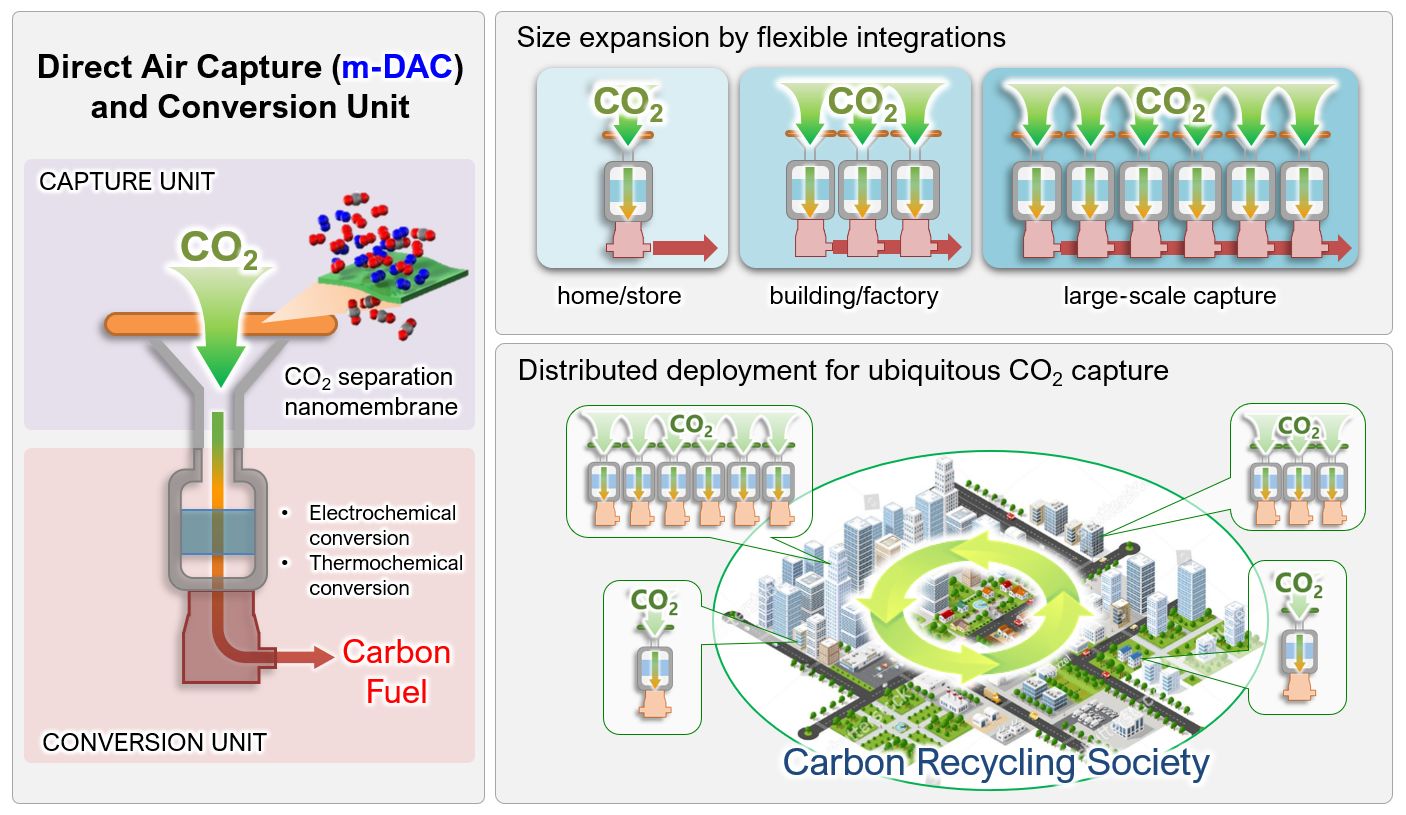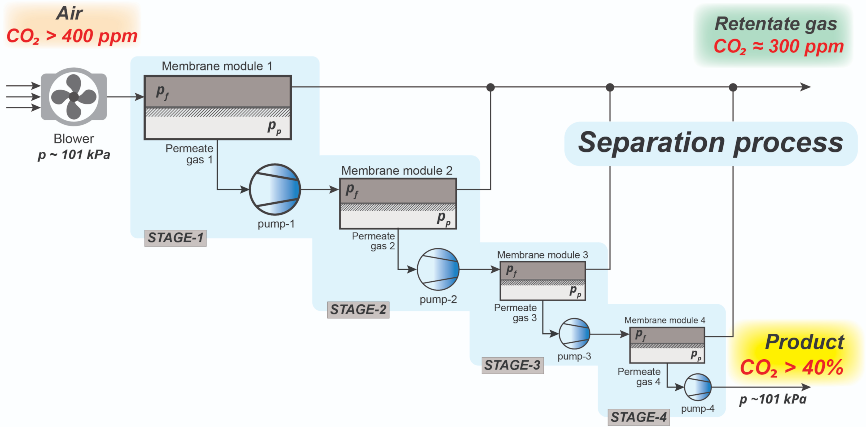研究成果 Research Results
- TOP
- News
- Research Results
- Directly capturing carbon dioxide from the atmosphere with membranes
Directly capturing carbon dioxide from the atmosphere with membranes
Gas separation membrane systems can enable ubiquitous CO₂ removal from the atmosphere 2020.11.18Research ResultsTechnologyEnvironment & Sustainability

Conceptual image of a Carbon Recycling Society based on m-DAC CO₂ capture systems combined with CO₂ conversion. The m-DAC enables the development of the various sizes of capture units that could be ubiquitously installed in residential and industrial sectors.
Despite worldwide efforts, reduction of carbon dioxide emissions alone is insufficient for mitigating global warming and consequent climate change caused by greenhouse gases in the atmosphere. To overcome these shortfalls, strategies for removing large amounts of the gases already in the atmosphere are also necessary.
Researchers from Kyushu University’s International Institute for Carbon-Neutral Energy Research (I2CNER) in collaboration with NanoMembrane Technologies Inc. now report that state-of-the-art separation membranes could provide a practical and flexible method for directly capturing CO2 from the atmosphere.
Referred to as direct air capture, or DAC for short, technologies that remove CO2 directly from the atmosphere are essential as part of a broad negative emission agenda aimed to limit global warming to 1.5 °C according to the recommendations of the Intergovernmental Panel for Climate Change.
Membranes are considered to be one of the most energy-efficient technologies for capturing CO2 from industrial processes emitting the gas in high concentrations, but removal of it from the atmosphere, where the concentration of CO2 is relatively low, presents additional challenges that have so far limited the consideration of membranes for such applications.
However, the research team calculated that multiple stages of membrane separation starting with air containing only 0.04% of CO2 could produce a concentrated CO2 stream of nearly 40% CO2—a 1,000 times increase in concentration—using chemical process simulations.

Schematic image of the four-stage membrane separation process able to increase CO₂ concentration from pre-concentration levels in atmosphere of about 0.04% to up to 40%, which is sufficient for subsequent CO₂ conversion by electrochemical or thermochemical means.
Furthermore, their estimates indicate that only about 0.6 kg of CO2 is emitted by the process for every kilogram captured, resulting in a net negative emission of carbon.
Although conventional technologies based on adsorbent technologies require large-scale systems for efficient CO2 capture and must be installed in locations isolated from residential areas, membrane-based DAC (m-DAC) systems can be developed with various sizes and even installed in homes, schools, retail stores, and conventional buildings, similar to conventional photovoltaic systems.
“The m-DAC concept provides a new approach to enable ‘ubiquitous CO2-capture’ with the potential for wide deployment in a carbon-recycling sustainable society,” says Shigenori Fujikawa, associate professor at I2CNER and first author on the study.
Based on these findings and current ongoing research activities, the I2CNER researchers have initiated a project under the government-supported Moonshot Research and Development Program.
Led by Fujikawa as project manager, the project aims to develop ways to directly CO2 capture from the atmosphere with the aid of membranes and subsequently convert the captured CO2 into valuable chemicals.
###
For more information about this research, see “A new strategy for membrane-based direct air capture,” Shigenori Fujikawa, Roman Selyanchyn, and Toyoki Kunitake, Polymer Journal (2020). https://doi.org/10.1038/s41428-020-00429-z
Research-related inquiries
Shigenori Fujikawa, Associate Professor
International Institute for Carbon-Neutral Energy Research (I2CNER)
Contact information can also be found in the full release.
- TOP
- News
- Research Results
- Directly capturing carbon dioxide from the atmosphere with membranes































